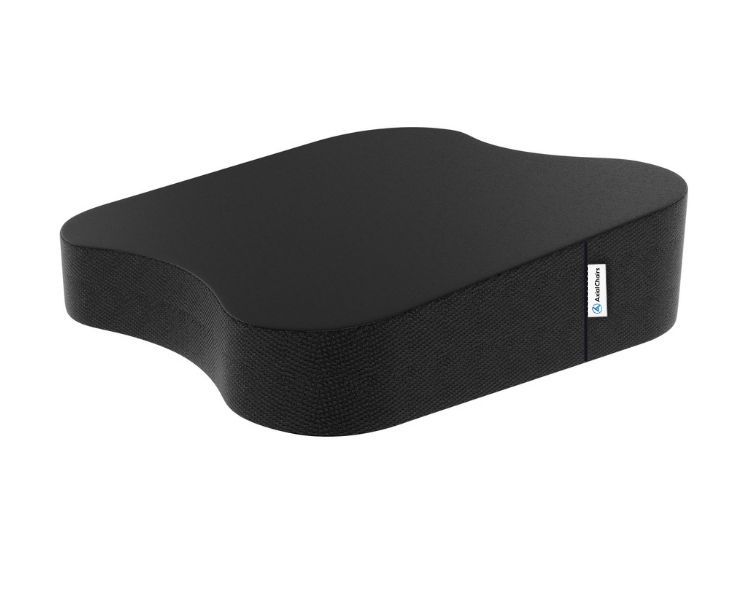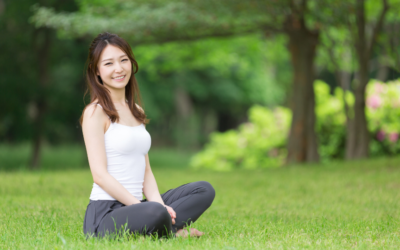Do you suffer from lower back pain, poor posture and an inability to squat correctly? If so, then Anterior Pelvic Tilt (APT) or Lower Cross Syndrome may be the issue. Unfortunately, inadequate desk positions and long periods of sitting are commonplace in many careers today – leading to complications like APT that can have serious implications on both our physical health and performance abilities. In this post, we’ll unpack the science behind APT and provide a five-step action plan tailored for each individual’s condition; arming you with all the knowledge needed to address the problem head-on!
| Step | Approach | Example Methods |
|---|---|---|
| 1 | Master Pelvic Tilts | Begin exercises on the ground, then progress to standing |
| 2 | Strengthen Key Muscles | Focus on glutes and abdominals, using exercises like hip thrusts and RKC planks |
| 3 | Stretch Overactive Muscles | Focus on hip flexors, using methods like lunge and rectus femoris stretches |
| 4 | Optimize Seating | Adjust your chair, use ergonomic pads, reinforce lumbar support, and ensure proper foot placement |
All Day Comfort & Support
As a practitioner with over 30 years of practice, and training as an ergonomist and author on sitting, I’m well-equipped to provide valuable insights. My contributions to this field have been well-received, with TV appearances, my Youtube channel, and a successful Kickstarter campaign for my ergonomic seat cushions. If you’re searching for answers, I’m confident that I can offer meaningful guidance.
What is Anterior Pelvic Tilt?
Well, APT is a postural pattern where the pelvis is tipped forward, pushing the hips backward and the abdomen forward, which results in a mild curve in your lower back. This condition often results from a number of factors, with prolonged periods of sitting being the most common in today’s world.
Here’s a surprising fact: a slight anterior pelvic tilt is completely normal and is present in approximately 85% of healthy males and 75% of healthy females. However, issues arise when the tilt becomes more pronounced, especially for those who lift weights. Why? Because when you perform loaded movements like squats and deadlifts with an anterior pelvic tilt, it puts significant stress on your lower back, hinders your force production over time, and can even lead to lower back pain and tightness. Furthermore, it interferes with your ability to lift heavier weights or properly activate the glutes. If that sounds familiar, it’s time to consider corrective action.
Black Friday: 35% Off Today
Typical Delivery 1-3 Days
Before we dive into the solution, let’s explore why this happens. Research suggests that APT is often the result of underactive muscles, such as the abdominals and glutes, and overactive muscles, including the hip flexors and the erector spinae. So, our strategy to rectify this will involve stretching the overactive muscles while strengthening the underactive ones.
However, there’s a critical prerequisite to this. You need to learn to properly control your pelvis, specifically how to perform a posterior pelvic tilt. Without this ability, your body will find ways to cheat when performing the corrective stretches and exercises.
Five-Step Action Plan
- Master Pelvic Tilts: The first step involves mastering the art of pelvic tilting. One effective way to practice this is by performing pelvic tilts on the ground. Doing ten reps, alternating between posterior and anterior pelvic tilts, will help you get a feel for it. You should then advance to doing the same while standing.
- Strengthening Exercises: The second step involves strengthening your glutes and abdominals using exercises like hip thrusts and RKC planks. The key is to perform these exercises correctly, focusing on the right muscle activation, and progressively adding weight to promote glute development.
- Stretching Overactive Muscles: Next, we’ll focus on stretching the overactive hip flexors. Research shows that consistently stretching these muscles can help reduce APT over time. The lunge stretch and the rectus femoris stretch are effective exercises that target these muscles.
- Daily Corrective Routine: Finally, consistency is key. Performing a daily routine, incorporating the exercises discussed, can lead to significant improvements. You can download the free PDF routine from the link in the description to guide you through this process.
- Get Your Seating Right: To effectively manage your seating needs, it’s essential to concentrate on various elements, with chair adjustments being a pivotal factor. Different methods can be used for this, including adding an ergonomic pad and lumbar reinforcement. These supplementary elements can ease strain on your back and legs, increasing comfort and posture during long stretches of sitting. Also, make certain your feet are securely on the ground and that there’s ample room between your chair and workspace. By following these pointers, any traditional hard chair can be upgraded into an ergonomic sanctuary that supports lasting health and happiness.
Ergonomic Support Cushion
A resourceful ergonomic seat wedge (above) can be deployed to properly align your spine and foster stability. This first-rate natural latex cushion aids in strengthening core muscles while relieving stress in other areas, such as the neck and shoulders. Moreover, maintaining an upright position is more gentle on your hips and knees, as it activates more muscle groups simultaneously compared to leaning back against something padded. This erect posture avoids the creation of harmful habits that individuals may unconsciously acquire while occupied with tasks.
Best Seat Cushion for Anterior Pelvic TiltAxial Ergonomic Seat Cushion® | Seat Chair Wedge
Quick Guide: A 30-Second Summary

All Day Comfort & Support
Product Name
Axial Designs™ Seat Cushion
Price
$149
Warranty
1 Year
Type
Posture Wedge
Top Layer
100% Natural Latex (Molded)
Bottom Layer
High-Density Foam
Top Material
Isometric Grippy Vegan Leather
Bottom Material
Non-Slip Material
Side Material
3D Breathable Fabric
Understanding Anterior Pelvic Tilt (APT) and Its Impact on the Body
Understanding APT involves understanding the body’s posture. Picture your pelvis as a bowl of soup. Ideally, it should be perfectly level to avoid spilling. But in APT, the bowl tilts forward, causing the “soup” to spill out of the front.
How does this affect your body, you ask? Well, it essentially disrupts the natural alignment of your spine, inviting discomfort and potentially pain. The body is a finely balanced machine, and like a domino effect, one misalignment can set off a chain reaction. If your pelvis is tilting forward, it forces your lower back to curve more, adding strain to your lumbar region, which can cause persistent lower back pain.
But here’s what I found out from my clinical experience: the primary culprit behind APT is often a lack of core strength and poor postural habits. Over time, our sedentary lifestyle leads to weak and unbalanced muscles.
That’s where my expertise comes in. I’ve spent years mastering techniques to realign the spine and strengthen the core. To combat APT, I utilize specialized chiropractic adjustments, exercises, and stretches that focus on your core muscles and hip flexors. I’ve seen patients bounce back, sitting effortlessly without back pain, after a few weeks of consistent effort. I can help guide you through this journey to regain a balanced and strong core.
Remember, your health is my priority, and my clinic is a safe space. Trust me when I say, I’ve got your back… literally! Together, we can navigate the mystery of APT, so you can enjoy your life without worrying about back pain. Now, how’s that for a tilt in the right direction?
The Connection Between the Pelvis, Hip, and Anterior Pelvic Tilt
Your hip and pelvis are intrinsically linked when it comes to anterior pelvic tilt. When the pelvis tilts forward excessively (excessive APT), it forces the hip joints into a state of constant flexion. This throws off the alignment of your entire lower body and puts undue pressure on your back leg muscles and gluteus muscles, leading to discomfort or pain. The key to addressing this is understanding that the pelvis, hips, and back operate in a finely tuned system – a change in one affects all.
Why 10 Minutes a Day can Make a Difference
You may be thinking, “10 minutes a day, really?” Well, believe it or not, this small commitment can result in significant improvements. Think of it this way: those 10 minutes a day are an investment into realigning your body into a neutral position. Focused daily efforts can strengthen your abdominal muscles, crucial for pulling your pelvis back into a neutral position and reducing that problematic anterior pelvic tilt.
Daily Exercises to Fix Anterior Pelvic Tilt: A Step-by-Step Guide
To correct an anterior pelvic tilt, exercises should target strengthening the core and the gluteus muscles, while improving flexibility in the hip flexors. An effective routine involves several exercises, including planks, squats, and hip flexor stretches. Each of these works the abdominal muscles and the back, contributing to a balanced, strong core. Remember, these need not be strenuous. The aim is to incorporate them daily, gradually increasing the intensity as your body adapts.
Utilizing Your Back Muscles to Counteract Anterior Pelvic Tilt
Your back muscles play a vital role in tackling anterior pelvic tilt. They assist in maintaining a neutral pelvic position, especially when your core is strong. By engaging your back muscles through exercises such as bird dogs and back extensions, you aid in correcting the tilt, reducing the strain on your lower back and the associated discomfort.
I explain the concept of my ergonomic design on a TV show HERE
Minute-by-Minute: A Breakdown of Your 10 Minute Daily Routine
Your 10-minute routine should include:
- 2 minutes: Warm-up exercises
- 3 minutes: Core strengthening exercises
- 3 minutes: Hip flexor stretches
- 2 minutes: Back strengthening exercises
Each minute is as important as the next, and the variety ensures a comprehensive approach to fix the anterior pelvic tilt.
I’ve written a complete hands-on review about the best sitting position for sciatica, and here is what I tested best with my sciatica patients.
Importance of Consistency: Committing to a Day-by-Day Approach
We often underestimate the power of consistency. Committing to just 10 minutes a day can yield incredible benefits over time. Your body responds to consistent efforts, be it days, weeks, or months, and slowly, you’ll find that your anterior pelvic tilt starts to correct itself.
Long-term Benefits of Correcting Anterior Pelvic Tilt: Your Hips and Back Will Thank You
Correcting an anterior pelvic tilt does more than just alleviate immediate discomfort. In the long term, it improves overall spinal alignment, reduces the risk of developing chronic back issues, and promotes better posture. Your hips gain greater flexibility and your back strength improves, reducing discomfort and promoting healthier body mechanics.
Potential Setbacks in Fixing Anterior Pelvic Tilt and How to Overcome Them
Progress isn’t always linear. You may encounter setbacks in your journey to correct anterior pelvic tilt, such as periods of increased discomfort or days where your tilt seems to have worsened. This is perfectly normal. It’s your body’s way of adjusting to changes in alignment and balance. Stay patient, don’t rush the process, and remember that I’m here to guide you through it.
Reply to Your Body’s Signals: Monitoring Changes and Adjustments in Your APT Journey
Listening to your body is critical in managing anterior pelvic tilt. You might notice subtle shifts in your body or changes in discomfort levels, and that’s okay! These are signs of your body adapting and realigning itself. Keep a close eye on these signals, and feel free to adjust your exercises accordingly. Remember, every day is a step towards a stronger, more balanced you.
As a chiropractor with years of experience, I hope you feel assured that my guidance on managing anterior pelvic tilt is rooted in expertise and practical understanding. Remember, your journey to a healthier body is a marathon, not a sprint. Stay consistent, keep up those daily exercises, and soon enough, you’ll experience the full benefits of correcting your anterior pelvic tilt.
Conclusion
The takeaway is this: correcting APT requires regular practice and being mindful of your posture during daily activities and training sessions. By consistently performing the corrective exercises and maintaining a neutral pelvis when sitting or standing for prolonged periods, you can make a significant difference in your overall posture and wellbeing.






